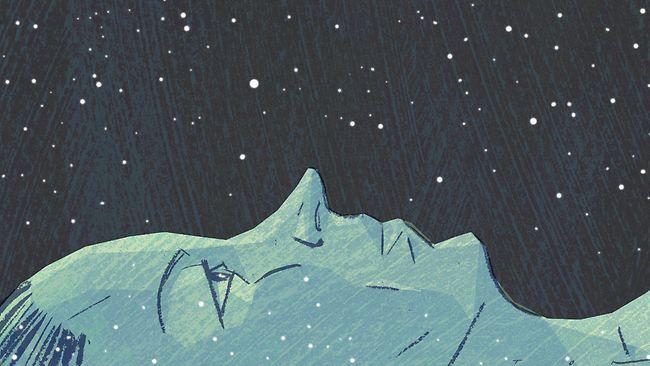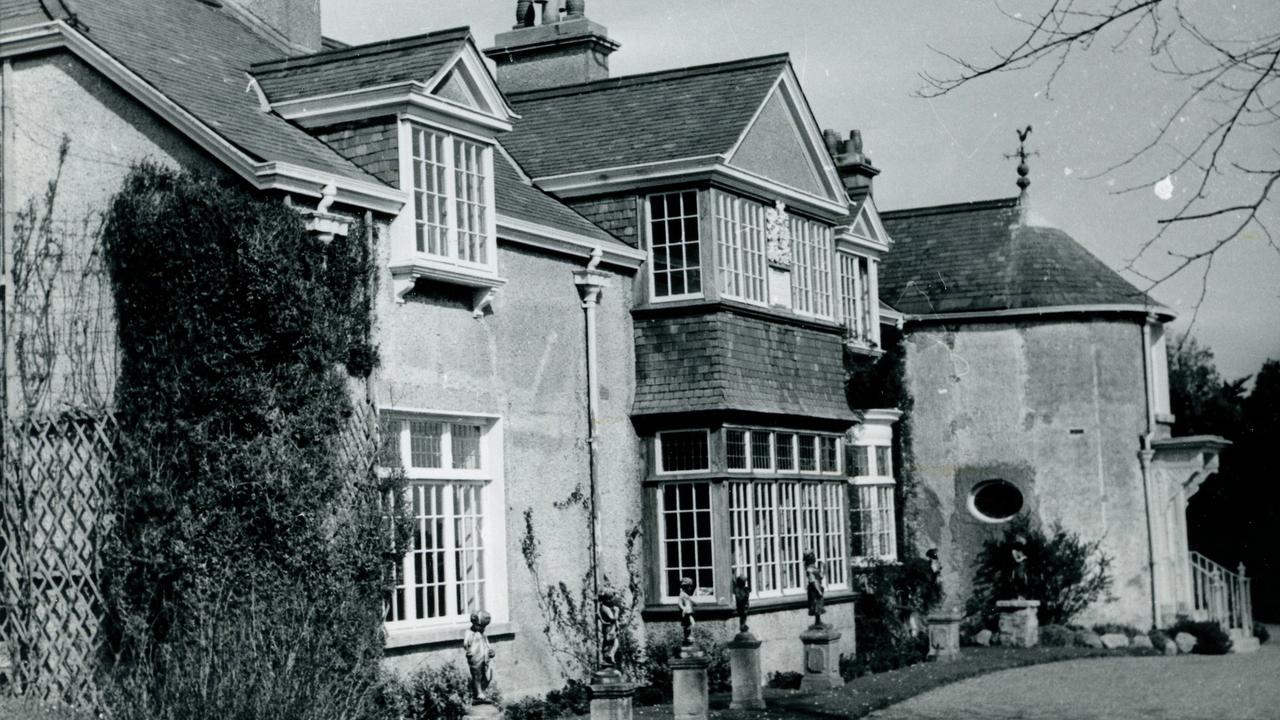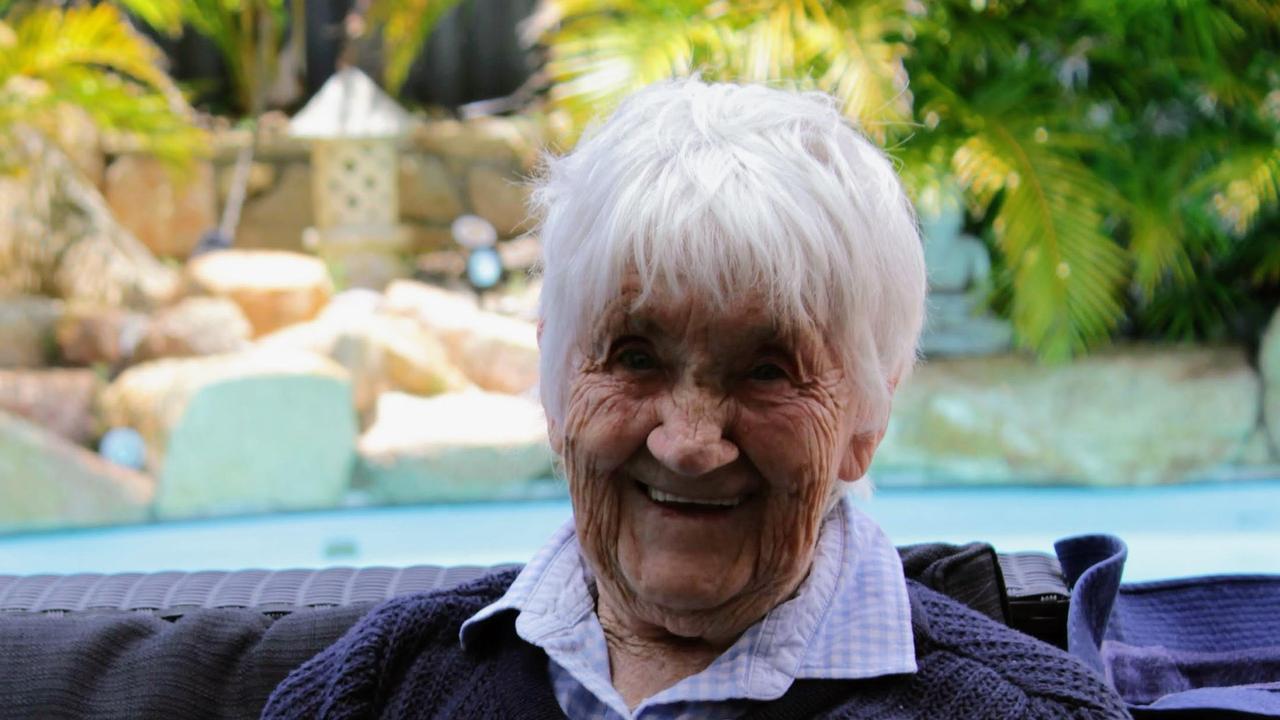Novelist's struggle to emerge
ALR IN the early 1970s, Elizabeth Jolley worked as a cleaning lady. Since she was a woman of moderate means, this was not a matter of economic necessity.

IN the early 1970s, Elizabeth Jolley worked as a cleaning lady. Since she was a woman of moderate means, this was not a matter of economic necessity.
Nor was it a way for the busy mother of three to fill empty days. Nonetheless, it fulfilled an urgent need: Jolley's adventures as a middle-aged domestic during these years, and later as a door-to-door salesperson and community nurse, made a writer of her after decades of effort and rebuff.
It did not much matter whether the work won Jolley full social or financial liberty; her jobs were too modest for that version of female empowerment. Rather, it was the sense of freedom she won by carving out a slim, sovereign margin in her life. It was the reconstitution of a self outside the enveloping roles of marriage and motherhood that gave Jolley confidence (and material) to keep writing fiction, at least until the society around her had evolved sufficiently to recognise its worth.
Of the many reasons put forward to explain the late starts made by female Australian writers such as Jolley, the need for inner autonomy is hardest to isolate and weigh. The demands of family and work, lack of financial independence, an indifferent publishing environment -- those "authentic facts" of gender summed up in Virginia Woolf's essay on the necessity of a room of one's own -- are more obvious justifications for the failure of figures such as Olga Masters and Amy Witting to establish reputations until retirement age.
The experience of Jessica Anderson, who died last year at the age of 93, can be read as a classic instance of a woman bumping up against these various barriers to wider recognition. Anderson's early desire to become an architect was thwarted and her subsequent literary career delayed for decades by straitened circumstance and family obligation. Even then, her early novels were incorrectly (and fatally, for their prospects) marketed by their publishers as genre titles. When success finally came with publication of Tirra Lirra by the River in 1978, Anderson welcomed it with ambivalence. She came to rue the special status readers accorded the book, as though its easy triumph was an affront to her long labours.
But, as with Jolley, Anderson's experience suggests larger complication. Her struggle to emerge as an author involved more than an overcoming of unfavourable external circumstance; it demanded what philosophers would call an epistemic shift, a leap from one way of thinking about the world and one's self to another. Anderson was born into a world of gramophone records, oil lamps and kerosene-powered irons: yet she wrote her last novel on a computer. While she inherited the manners and mores of a society essentially masculine and rural in character, divided by class and narrow religious squabbles, the Australia of her maturity was urban, ostensibly feminist, and split along lines of money and real estate.
Most significantly for Anderson, though her formative years were spent in a country dismissive of its parochial literature, her later life coincided with a wholesale expansion of interest in local narratives, marginal perspectives and vernacular voices. The question of how identity might relate to changing times was not an abstract notion but a fact of life, and it shaped Anderson's creative development as deeply as any ordinary inconvenience. Not for nothing is Elaine Barry's scholarly study of Anderson's writings entitled Fabricating the Self: The Fictions of Jessica Anderson (1992).
What is more, these personal questions are embodied in Anderson's fictional creations. Isobel, the enigmatic beauty at the centre of her first novel, 1963's An Ordinary Lunacy, is a sexual cipher, "a woman who has no identity other than with a man", according to Barry. A dozen years later, Frances O'Beirne, young heroine of Anderson's The Commandant (1975), says of herself: "I am made up of hundreds of persons, and I never know which one will come out." And if a tragic confusion of interior impulses shapes Nora Porteous's life in Tirra Lirra by the River -- yet another character who speaks of her many selves -- that perplexity lingers, even into Anderson's late work. The author was in her 70s and a firm fixture in the literary landscape when she imagined the (initially, at least) meek and insubstantial figure of Beth in 1990's Taking Shelter.
During three decades, Anderson created a rich and various cast of female characters (her blokes, neither rich nor various, are almost invariably hapless or cruel) whose most common feature is their provisional sense of self. These she proceeds to embed in a series of narratives utterly distinct from one another in terms of subject matter and style. Indeed, to read Anderson at any length is to understand the muted response to her passing: the same plurality of approaches and voices that retarded her initial reception bedevils easy summation of her achievement. And yet it is here, amid her multiplicity, a sort of feminine negative capability, that the author's enduring value lies.
Anderson was born Jessica Queale in September 25, 1916, in rural Queensland. She was the youngest of four children born to Charles, a public servant from a large Irish family, and Alice, an English mother, both of whom were left-leaning in their politics and, remarkably for their time and place, avowed pacifists and atheists. The family moved to Brisbane in the early 1920s, to the suburb of Yeronga near the Brisbane River (Lloyd Rees grew up in a rambling Queenslander only streets away), for the sake of the children's education. It was there that Anderson's father died when she was 16.
Although notoriously reticent about autobiographical elements in her work, Anderson explained in an interview that "you don't make a character that hasn't got something of yourself in it". Her 1987 collection, Stories from the Warm Zone and Sydney Stories, drew openly on this time and place. Of Nora Porteous, whose retrospectively unfolding life is the subject of Tirra Lirra by the River, Anderson was more guarded, admitting only that "she was within my range". Still, it is fascinating to note the rhymes in Nora and Jessica's experiences when attempting to reconstruct the author's early years.
What should be made of the fact, for instance, that riverside streets near Anderson's Yeronga home bear the names Tennyson, Lancelot, Merlin, and King Arthur?
In the opening chapters of Tirra Lirra, a now elderly Nora Porteous returns to her childhood home in an unnamed subtropical town after decades of British exile. Hers is a prodigal's delayed awakening to the past. When Nora recalls her young self, drunk on lines from Idylls of the King and The Lady of Shallot, lying alone on the nearby riverbank with her breasts bared to the moonlight in anticipation of some imagined Lancelot's arrival, it is not only a naively sensual act but an effort to synchronise the abstract realm of art and poetry -- that is, of beauty -- with her own mundane surroundings. And yet Camelot Street turns out to be a real place, just off the Brisbane River. It is Nora's experience that exists in the intangible territory of art.
The impulse that links character and creator here is more ambiguous than the novel's first-person narration suggests. It is the metaphor of a creative young woman's desire to bring apparently incompatible aspects of the world into alignment that rings with autobiographical truth, not some disguised recollection.
John Updike once described his creation Rabbit Angstrom as a version of the author who never made it to college. Nora is a portrait of the artist who, unlike her creator, fails to realise her nature: "a born artist" in Anderson's words, who lives "in a place where artists, although they were known to exist, were supposed to exist elsewhere".
Later in the novel, Nora senses this:
I no longer thought of Sir Lancelot. The war, and the boys under the camphor laurels, had obliterated him. But perhaps not quite. At intervals throughout my life, sometimes very long intervals, there has flashed in my inner vision the step of the horse, the nod of a plume, and at those times I have been filled by a strange chaotic grief.
The inchoate longing in lines like these go some way to explaining Anderson's uneasy relationship to her best known work. In Nora, she had sought to create a flawed, what-if version of herself -- a human declension from her more fully realised destiny -- that then came to stand for Anderson in the public imagination. It was not a simple failure to preserve what she called her "lovely privacy" that galled Anderson but the paradox of her achievement: a fiction so convincing, it subsumed the author's private self into that of her melancholy creation.
Tirra Lirra was still a lifetime away when Jessica Queale, having briefly studied art at Brisbane Technical College, escaped to Sydney in 1935, to the elsewhere where artists existed. In the decades that followed, she married twice, lived briefly in Britain, raised a daughter and worked, adapting plays for radio and churning out short fiction for magazines and newspapers. Literary piecework paid the bills and provided certain technical satisfactions. But, just as the late starter Rosalie Gascoigne's study of flower arranging led to those unique assemblages that made her reputation as an artist, a growing complexity in Anderson's pseudonymously published writings pushed her towards literature proper. "They were bad stories," Anderson recalled, "but the better they got, the more likely they were to be refused. They got better of their own accord and they started to be turned down all the time."
The backhanded modesty of the explanation is telling. If Anderson's emergence as a writer was delayed by a diffidence regarding her gifts, it was caution that combined ingrained gentility and hard aesthetic sense. Barry reports that Anderson's manuscripts show evidence of laborious revision. She also records the author's disabling awe in the face of the great writers who filled her shelves: Henry James, for example, whose novels and stories she dramatised for broadcast and from whom she learned the virtues of reticence, and Muriel Spark, whose intelligence and mordant wit must have thrilled the Australian writer like a wicked friend. But it is the brilliant, eccentric figure of Henry Green who looms largest in Anderson's private pantheon (she said of him, "If I could choose which novels I'd like to have written I would choose his, all of them"). It was from the reclusive British novelist she learned how to subordinate authorial presence, and to allow her voice to contain a multitude of other voices without losing a tone that belonged to her alone. Where such self-effacement struck contemporaries as odd or even masochistic in a man, it came naturally to a writer who had cut her teeth on radio's theatre of voices, and to a woman long used to demurely surrendering self to other selves. Green taught Anderson how to turn a bygone virtue into a fresh instrument of her art.
One of the best moments in The Commandant -- Anderson's favourite of her novels because, she said, it was free of "funky spots" -- Henry Cowper, the inebriate doctor of Moreton Bay's penal colony and black sheep son of an archdeacon, has a bitter and funny exchange with Logan, the colony's commandant, an implacable disciplinarian whose punishments have resulted in the death of at least one convict.
Afterward, sickened by complicity with the savage actions of his superior, Cowper begins a letter to his father, reporting on his progress. He does not get very far into a missive of rote filial piety before rum and anger get the better of him, and he begins a second letter instead: "An Account of the Spiritual State of the Settlement for my father, who believes in God but not the Devil.
"Your son believes in God and the Devil."
In the catalogue of brutal honesty that follows, he writes of one officer sharing Cowper's decency who, after supervising a flogging, "sits with his hands over his eyes and shivers like a little dog". He excoriates the commandant, who believes only "in God and King George the Fourth", along with the Commandant's wife, Letty, "who believes in God the lucky charm, like a hare's foot".
"For all the rest, officers and officials and prisoners and soldiers, all, all are pagans. They believe in ghosts, or arts, or in the dark sensational spirits of rocks and rivers and trees."
Although the passage serves admirably as a sketch of the various degrees of indifference, blind obedience, cant and cruelty on which the isolated colony is built, it is the gap between official discourse and private language that grants Cowper depth. Just as the novel's genesis lay in contesting contemporary accounts of the historical death of William Logan, it is in the gap between Cowper's voices that something approaching truth can be found.
This resolutely external approach to character allows Anderson to treat the reader like an adult -- we are obliged to triangulate truth from competing voices -- and to juggle large casts without privileging one consciousness over another.
Take Anderson's Miles Franklin-winning follow-up to Tirra Lirra, 1980's The Impersonators, which prepares a cross-section of the rising Australian middle class and places it under a microscope. Lacking those deep genealogies on which the 19th-century British or Russian novel relies, Anderson moves horizontally instead, tracing a society as it emerges into mass prosperity and a measure of sophistication during the post-Whitlam years.
Barry is surely right in pointing to how the novel showcases Anderson's "remarkable ear for Australian cadences across a range of classes". Today, though, The Impersonators seems a book in which large ambition works against narrative intimacy, as if Anderson's discomposure at the success of Tirra Lirra by the River inspired more rigorous formality: better to test readers with difference than become trapped in the easy confidences of the first person. This is not the simple case of a private person, flinching from unwanted proximity. It is a measure of her seriousness as a writer that she challenged herself and us rather than mining the same vein to exhaustion.
While Anderson was willing to risk some asperity in the wake of success -- as in the epic suburban milieu of The Impersonators or the postmodern convolutions of Taking Shelter -- her later work showed evidence of mellowing. She revisited her past once again in Stories from the Warm Zone and even returned to first-person narration for her last novel, 1994's One of the Wattle-Birds.
It is an always surprising and somewhat melancholy process, the whittling away of a writer's reputation. Today we praise Tirra Lirra (the author's only novel still in print) with the guilty conscience of those who know Anderson's name lives on in a work that did not wholly please her. Her stated preferences were, rather, for the fictions that bracket its arrival: the complexity and scope of The Impersonators was a source of quiet pride for Anderson, and she was correct in calling The Commandant, an elegantly proportioned historical novel whose vision of convict-era Australia retains the power to shock, the most deserving of reclamation among her works. That Anderson's second novel, A Question of Money -- dumped by its British publisher after it failed to find an Australian distributor -- should remain unpublished after half a century leaves a scandalous hole in her oeuvre.
But if we are to be left with only one of Anderson's voices, why should it not belong to Nora Porteous? Tirra Lirra's heroine does eventually put away the many personas that stood between her and authentic engagement with some primary self. An unintended consequence of Anderson's determined privacy is that our curiosity has settled on the character that best approximates our idea of her. Yet it is fair to say that Nora's long odyssey, her search for a unified self, has its real-world counterpart in Anderson's body of work. She is a beautiful, breathing emblem of her maker: a young woman whose skin suffered in the heat and who, "on hot bright nights", would smear herself with citronella, take a rug out to the lawn, and there "allow her hatred of the ugliness around her, her fear that she might never escape it, be obliterated by the thick brilliance of the stars".
The romance of the picture should, however, never make us forget that Anderson did make her escape, and that this freedom was won in the teeth of considerable personal difficulty. Beneath Nora's adolescent illusions lurks Anderson's implacable drive to write, the same undaunted energy that inspired Jolley to clean the houses of Perth's rich so she could type at the desks of their empty apartments, a burglar of the imagination. In this sense, Anderson is closer to her final creation: Cecily, from One of the Wattle-birds, yet another young woman who sets out to extract truth from the fictions on which her life is built. It is Cecily's words -- almost the last in the novel -- that belatedly sum up the combination of patience and salutary ruthlessness that made Anderson a true writer at last:
I would take refuge under their compulsion, and meekly accept their strictures, while my coming intention ticked secretly on in another place.



